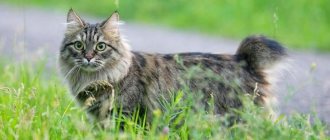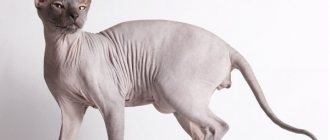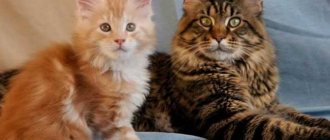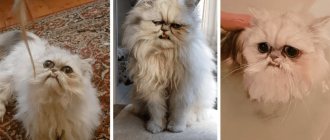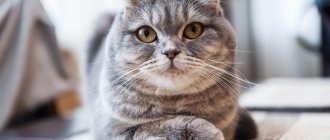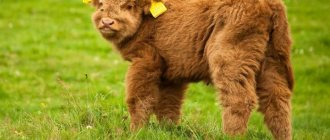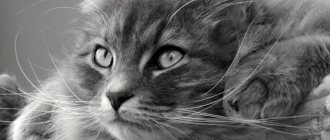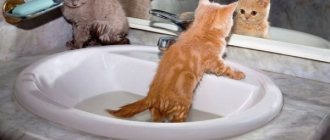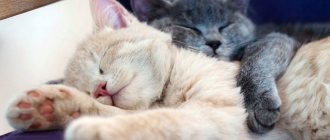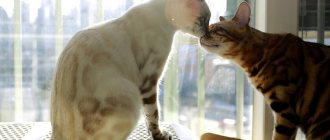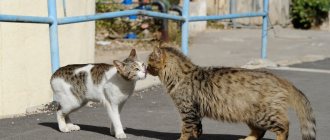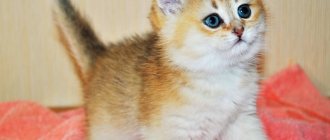The tail is the posterior part of the body, characteristic of vertebrates. It performs various functions: it helps birds fly, it is the main organ of movement in fish, and for dolphins, for example, it allows them to stun fish before feeding. Opossums use their tail to climb trees, kangaroos use it to jump, and ungulates use it to fight off annoying midges.
But many people are interested in which animals do not have a tail. We invite you to get to know them.
Why are some dogs born without a tail?
Some pet owners like tailless pets. Such preferences have led breeders to adapt to genetic mutations. In the context of the topic raised, it is necessary to touch upon the term tail docking, as well as understand how this process occurs.
Removing part or all of the tail is a long-standing practice used by dog breeders. When the procedure is performed after the animal is born, it is called tail docking, and the dogs undergoing it are classified as docked breeds.
The process is carried out surgically using scissors and is performed when the puppies reach the age of six months or more. Mostly, docking is amputation.
Docked dogs should not be confused with bobtails; in the latter, taillessness is natural.
Below are the breeds whose representatives are born without a tail.
Pixiebob
- The tail part of the presented specimens is shortened and does not really stand out. It is difficult to confuse these animals with other individuals classified as felines. According to their external characteristics, they are similar to lynxes, and the absence of a tail is only touching.
- Pets are endowed with ears of the correct build, on which there are tassels of hairs at the tips. Yes, there are whiskers, which, again, bring these felines closer to lynxes. To have such a miracle in your home is real happiness.
- The cats are large in size; according to estimates, the body weight can be 9 kg. However, average individuals weigh approximately 7 kg. The body is well built and muscular, the spine is strong. The animal represents a hunter and a friendly family member in one package.
- Initially, representatives of the family were bred in the United States of America. After some time, they became more popular, and breeders began working on cats in Canada and other countries. These cats are characterized by an increased number of fingers, which is why they are called cats with mittens.
Boston Terrier
The Boston Terrier is the result of crossing an English Bulldog and a White English Terrier. This breed belongs to the bobtail breed. This means that its representatives are born tailless.
A large number of Boston Terriers are born with a small tail, which is accepted as a standard characteristic. If a dog has a long or docked tail, the owner may have difficulty registering the breed or recognizing the pet as a purebred.
The Boston Terrier is often called the American Gentleman. Its main features (besides its small size) include sociability, friendliness, developed intelligence and the desire to please the owner. These dogs are easy to train and try to protect their family members.
However, if not properly trained, the Boston Terrier can become aggressive. Violation of its territorial boundaries can also cause a negative reaction from a dog.
This breed is a loyal watchdog, an excellent companion, and only barks when necessary.
These dogs are known for their characteristic white and black coloring, as well as large, wide-set eyes. They are suitable for dog sports that require obedience, agility and diving.
Hybrid breeds
Hybrid breeds
The list of hybrids is quite impressive. The ending "bob" in the name indicates the absence of a tail.
- The pixie-bob is a miniature lynx; for its appearance we must thank American breeders who crossed the wild bob-tailed cat with domestic pets.
- The toy bob was developed in Russia, or more precisely, in the southern city of Rostov. Currently the breed is not recognized and is still under development.
- Ouhi-bob is the result of mixing the blood of the Siamese breed and Menk cats. All of them have a characteristic bicolor coloring. There are both long-haired and short-haired pets. Like the previous breed, this one is still experimental.
- The snow bob is the same as the American bobtail, except for the color: breeders are trying to breed a real miniature snow leopard, trying to get completely white cats.
- Twisty resembles a kangaroo in appearance, which is due to the noticeable difference in the length of the front and rear limbs.
- Highlander - no, this is not the name of the famous SUV, but a real cat - the result of mixing curls and ordinary “domuses”.
Today these are all breeds that have their main distinguishing feature - the absence of a tail. Perhaps in the future there will be more of them, but for now we have to be content with little.
https://101kote.ru/stati/koshki-bez-khvosta.html
https://petstime.ru/article/porody-koshek-bez-hvosta
https://kotobormot.ru/kot-bez-xvosta-porody-i-nazvaniya/
Brazilian Terrier
Representatives of this breed are interesting because their tail can be long or may be completely absent. However, a docked tail is considered the standard.
In Brazil, this part of the body is usually docked, but if the dog is not subjected to the procedure, the tail grows short and thick. In some countries, surgery using a scalpel and scissors without anesthesia is prohibited.
The Brazilian Terrier has a narrow chest, folded ears and a triangular shaped skull. He inherited his tricolor color from his closest relatives - the Jack Russell Terrier and the Fox Terrier.
Representatives of the breed are smart and attentive animals. They love to play and dig holes. Due to their excessive activity, Brazilian Terriers require space (small spaces are not suitable for them), as well as constant training. If you don't provide your pets with outlets for energy, they will find entertainment that may not be to the liking of the household.
Japanese Bobtail
The Japanese Bobtail is an ancient breed, known since the 6th century AD. It is believed that the breed was obtained naturally without human intervention.
In Japan, bobtails first appeared among traders. They loved these cats for their excellent ability to catch mice living in silk bales with goods. Then the Japanese emperor saw cats without tails and literally fell in love with the animals. There were always bobtails around him; pets accompanied him even at important meetings.
Externally, representatives of this breed are similar to ordinary cats. There are long-haired and short-haired dogs of various shades. In Japan, they believe that tri-colored bobtails bring happiness to the home. A distinctive feature of the breed is its short tail, which looks like a pom-pom. It does not at all prevent cats from perfectly navigating the terrain and conquering even the highest points in the room.
English bulldog
These dogs are not always born tailless, so an English Bulldog owner should not be surprised if he is asked if he has docked his pet's tail.
In some representatives of the breed, this part of the body is so short that they are often perceived as tailless. In fact, all individuals have a tail, only their size differs - from very small to medium length.
The tails of some English bulldogs are docked, but in a number of countries (USA, UK) this is considered illegal. Sometimes this part of the body can be cropped for medical reasons.
In most cases, dogs are born with a short, straight or curled tail. The first option is preferable and is recognized as the breed standard.
By nature, English Bulldogs are quite stubborn, but over time they become patient and friendly. They are family oriented and are known to have a strong attachment to their owner. Representatives of the breed are not energetic, but they adapt well to any environment and also get along with children and pets.
Among English bulldogs there are long-tailed individuals, but this is considered a deviation from the norm.
The descendant of the English Bulldog was bred with a short and thick tail, which often raises questions among others regarding the connection.
Representatives of the breed are born with three types of tails - straight and short, curled (screwed) and short, as well as with a thick base and a thin tip. Regardless of the type, these nearly missing body parts can cause health problems for your dog. Over time, French Bulldogs' tails have developed incorrectly, resulting in a poor connection to the spinal column. For this reason, the animal may experience spinal deformities throughout its life.
These changes are not only painful, but can also cause nerve damage. They are determined by genetics and are an attempt by breeders to achieve the breed standard of a curled tail.
French Bulldogs are small dogs that make excellent companions. They are smart and calm, show good watchdog abilities, and also strive to protect their family members. These pets are patient and eager to have fun, so it's no wonder they are often called "clown dogs."
In past times, the Croatian Shepherd was born with a long and curly tail, which was docked after birth. However, with the introduction of an official ban on this operation in the country, breeders have only one option left to have a tailless representative of the breed - through selection.
Nowadays, most puppies are born with a very small, moderately high tail covered with thick hair, or no tail at all. In some countries, this part of the body can be docked by 2.5 cm. Cupping, for example, is recognized as a legal procedure in the USA.
When at rest, the Croatian Shepherd's tail is lowered, and when alert, it is raised above the back.
The Croatian Shepherd belongs to the group of herding dogs. She was bred and used for the purpose of looking after sheep and cattle in Slavonia (historical region of Croatia). The appearance of the breed dates back to 1374.
These dogs are medium in size with a rectangular body, and their head and paws are covered with short hair.
Bretons are compact dogs that are in most cases born tailless. However, sometimes puppies with long tails appear in the litter. As for docking this part of the body, the procedure is used quite often in relation to representatives of the breed. Docking is carried out at a distance of approximately 10 cm from the base.
For a dog, the tail is important, performing functions such as maintaining body balance and communicating with other animals; When swimming, the tail acts as a kind of rudder, helping to follow the chosen direction.
The Breton Epagnole is medium in size and has a pleasant appearance. It is characterized by agility, strength, energy and the ability to move quickly. Among its qualities are severity and hyperactivity, which is associated with the origin of the dog - it was previously used during bird hunting.
Bretons are great for family life, but they need activity and plenty of daily exercise.
You may find similarities between Bourbon Braque and Breton Epagnole. This is explained by an identical mutation that affects the formation of the tail of animals. Brackets are also often called short-tailed pointers.
These animals are born with a short tail or no tail at all. This feature is due to the fact that breeders, in the process of forming the breed, adhered to strict requirements for color and tail length. The result was a dog whose characteristics were more important in appearance than in abilities. This led to a loss of interest in the breed for some time: no puppies were registered between the mid-1960s and mid-1970s.
The breed's revival occurred after standards were relaxed, tail docking was allowed, and attention was paid to developing the dog's hunting instincts.
Despite the fact that the birthplace of the Bourbon Braque is France, the dog is currently being actively bred in the United States. The main distinguishing features of this small pet are its developed hunting abilities, activity and the ability to quickly change direction while moving.
There are two types of Bourbon Braque colors: liver (wine, faded lilac) and tan (peach). Representatives of the breed have a slightly rustic appearance. Females are generally much longer, thinner and more elegant than males.
Vertebrates
It is much more interesting to find out which vertebrates do not have a tail. As a rule, most representatives of the subtype are endowed with this important organ, but in nature there are exceptions. And this is a detachment of tailless amphibians, among them there are many very interesting animals. The total number of species is approximately 2900. Despite this diversity, they have a similar structure:
- Short body with an undeveloped neck.
- Developed forelimbs, while the hind limbs are much larger in size than the front ones, which helps tailless amphibians to move by jumping. Some species are even capable of making gliding flights of more than 10 meters, which helps them in hunting insects.
- The flattened head ends with a slightly pointed snout and a wide mouth, which compensates for the lack of a neck.
- The skin is bare and slippery.
- The eyes are large and mobile.
- The nasal openings are covered with a special valve.
For the most part, they lead a land-based lifestyle, feeding on arthropods, which they deftly catch with their tongues thrown forward. Answering the question of which animals do not have a tail, an example can be given - these are tree frogs, inhabitants of the tropical jungle.
Australian short-tailed cattle dog
Heeler (the second name of the breed) is of medium size. It is a naturally tailless working dog and differs from the Australian Cattle Dog, which has a docked tail. However, both of these breeds are bred in Australia for herding.
Heelers are energetic animals that are characterized by attentiveness and obedience. They are loyal to their owners and reserved with strangers. Representatives of the breed are able to withstand harsh weather conditions, which is necessary for a herding dog.
The natural taillessness of heelers (or the presence of a short tail) is the result of the work of breeders. The current standard requires that this body part be no longer than 10.2 cm.
Due to the fact that Australian short-tailed cattle dogs are bred only in Australia and Canada, they are considered quite rare.
Japanese Bobtail
From the name of the breed of these animals it is immediately clear where they come from.
The main difference of this species is a very slender, beautifully built physique. Also, these cats are somewhat smaller in size than all the breeds described above. The eyes deserve special attention, since their specific shape and bright color are the main symbols of the breed.
The head of Japanese Bobtails is triangular in shape, with wide erect ears.
Such animals have a tail, but it is unusually small, sometimes even completely invisible. Their fur is smooth, fluffy and soft. These cats practically do not shed. As for colors, animals with three colors are most often found.
The peak demand for these animals occurred in the post-war years. And this species of animal was officially recorded in America in the 1960s.
Japanese Bobtail
Pembroke Welsh Corgi
There are two types of Welsh Corgis: Cardigan and Pembroke. The main difference between them is the tail. If the first one has a long one, then the second one is born tailless, or this part of the body is very short.
Since short tails are currently in demand, tail docking is very popular. According to current standards, it should be performed as close to the spine as possible, but without creating a depression.
The Pembroke docking procedure was carried out everywhere for a long period of time, until in some countries it was banned at the legislative level. Some representatives of the breed were bred only because breeders sought to obtain short-tailed dogs.
A small ponytail is the result of a recessive mutation of the T gene. Thanks to this feature of the body structure, the Pembroke can be distinguished from the Cardigan Welsh Corgi.
This breed belongs to the hunting group. Its representatives are active, but at the same time gentle and affectionate animals.
Why do animals need a tail?
Often, young children, just beginning to explore the world around them, ask their parents the same question: “Why do animals grow tails? “It should be noted that not every parent is able to give a clear and truthful answer to this simple question.
Usually the answer is banal phrases about how this is how it works. But inquisitive little minds are rarely satisfied with such a general answer and continue to look for more specific reasons.
Especially for these inquisitive kids, as well as for the peace of mind of their parents, we inform you: there really are such reasons.
Tails grow because without them, many animals would feel “as if they had no arms.” With the help of the tail, animals can communicate and express their emotions, find new friends and scare away opponents, defend and attack, keep warm, give danger signals, climb trees, steer their own body when running, jumping, flying or swimming, maintain balance or just have fun. Tails play a very important role in the lives of most animals.
Australian Shepherd
This medium-sized dog is born tailless or with a shortened tail, but the vast majority of individuals have a long tail. This circumstance causes a misunderstanding of what the tail of a purebred animal should actually be like. There is controversy among breeders regarding the correct and healthy body of an Australian Shepherd, because... both options (with and without a tail) are formed naturally.
Currently, taillessness among representatives of the breed is considered to be the norm, because One out of five individuals is born without this part of the body. Many animal owners, in order to maintain the dog’s familiar appearance in their country, carry out a docking procedure.
Typically, a dog's tail tapers towards the tip, which is associated with a gradual decrease in the size of the vertebrae. However, in the Australian Shepherd, the vertebrae at the end of the tail are often missing, creating a stubby appearance.
Representatives of this breed are smart, very energetic and need daily training.
Description of some representatives
Having considered which animals do not have a tail, we suggest getting acquainted with some of the most interesting of them. Thus, the fire toad resembles the familiar frog in appearance, but is distinguished by a brighter color of the abdomen. Its body size, as a rule, does not exceed 6-7 cm, and its unusual disc-shaped tongue and heart-shaped pupils make the animal unique. The flashy coloring of the abdomen helps the frog survive - when an enemy approaches, it falls to the ground with its belly up in order to scare away the predator with its bright colors.
In addition, the skin of this tailless amphibian produces a special secretion - frynolicin, which is harmful to many animals. Lives near bodies of water, prefers not to move a significant distance from a pond or swamp. It is interesting that the toad is one of the longest-living people - a record is registered - 29 years, which is a very impressive indicator for amphibians.
The grass frog prefers a solitary lifestyle and uses small insects (crickets, snails), as well as snails, millipedes, worms and crustaceans for food. In captivity it can live up to 12 years; in nature, as a rule, it becomes a victim of predators or dies due to the negative influence of humans.
The Javanese flying frog, thanks to its webbed feet, glides very well in the air. It is also distinguished by its bright color.
The midwife toad is distinguished by a unique way of caring for offspring - the male, having fertilized the eggs, places them on his own thighs, where they will remain until the tadpoles are born. Until this time, the father will have to select a reservoir that is comfortable for the wintering of the offspring.
King Charles Spaniel
These small pets are often called English Toy Spaniels. They enjoy spending time in the company of family members and can be kept as lap dogs.
Sometimes King Charles Spaniels are born with a full tail, but if a break is found on this part of the body, breeders prefer to do the docking, leaving two-thirds according to breed standards.
If the animal has a long tail, it should be at the level of the back and be in motion while working.
King Charles Spaniels are descendants of hunting dogs, although they are not used for this purpose. They are friendly, intelligent, and even-tempered, making them excellent therapy animals.
Representatives of the breed do not have much energy, but they know how to get along with children and feel good in the family circle. Breeders recommend avoiding rough handling when interacting with this pet.
King Charles Spaniels have dark eyes and a short muzzle. They are good guards who will raise their voices when strangers try to enter their territory.
Upbringing
American Bobtails have developed intelligence. They easily learn the rules of behavior in the house and quickly get used to using a tray and scratching post.
Kittens usually receive basic socialization in the breeder's home. In the new apartment, the baby needs to be shown a potty and be closely monitored in the first few days. If the short-tailed cat does not immediately remember where to relieve himself, he begins to worry, sit down, the cat must be carefully transferred to the tray. A smart kitten will quickly understand what is required of him. You cannot hit your pet for peeing in the wrong place. His negative emotions will be associated with the process of evacuation itself, and not with the place. The cat will begin to hide in the corners, and it will be much more difficult to train him to use the toilet.
You need to immediately wean your Bobtail away from playing with your hands. A grown large animal can unknowingly cause serious injury to a person. When the baby begins to bite or scratch, the game must be immediately interrupted and offered a special ball, fishing rod, teaser or mouse instead of fingers. An active Snow-Bob will be happy to engage in special “entertainment” activities and will not tear up furniture or books.
Thanks to their extraordinary mental abilities, Bobtails are easy to train and can master some simple commands. The main thing is to organize classes in the form of a game, then the Yankees will happily study, enjoying the additional attention from the owner.
If a child does something illegal, it is enough to reprimand him in a stern voice. American bobtails try not to disappoint their owners and have a great sense of intonation. When a young cat loses control of energy during play, it is permissible to spray it with a spray bottle. Representatives of this breed do not like water very much. He will associate pranks with unpleasant sensations. In general, Bobtails are very obedient; problems with their upbringing rarely arise.
Miniature Schnauzer (Miniature Schnauzer)
These dogs are not only friendly and caring, they are very attentive and have watchdog abilities. Most Miniature Schnauzers are born with a tail, but some are naturally tailless.
The natural absence of an important part of the body is caused by a mutation, which, in turn, can be fatal, because. causes deformities in puppies. However, not all tailless miniature schnauzers are carriers of an undesirable gene responsible for such serious consequences.
These dogs are smart and obedient. They tend to want to please their master, so they are easy to train. Miniature Schnauzers are active and require regular exercise, but they can live both in an apartment and in a country house.
Most representatives of the breed are born without a tail. The docked animals belong to the American Kennel Club.
Why are cats tailless?
Geneticists couldn't ignore tailless cats
and conducted research on the biological nature of species and developed their theory about their origin.
Cats with short tails were the result of natural selection, the influence of a mutated gene that passed from cat to cat in each generation.
Today there are several varieties of breeds without a tail. Some do not have it at all, while others have several vertebral segments that look like a fluffy pom-pom.
English Shepherd
The origin of the English Shepherd is covered in legends, according to which the blood of the dogs of the British Isles and the shepherd dog flows in its veins. These animals were brought to Europe by statesman Julius Caesar during his invasion in 55 BC, and then followed with the first settlers to America.
Generally, the English Shepherd's tail is of medium length, with the tip reaching the knuckle. When the dog is resting, it is held straight and up or behind the back.
Among the representatives of the breed there are also bobtails, which are recognized by the American Kennel Club; their tail length is in the range of 15.3-18.3 cm.
English Shepherds are medium-sized animals with good balance. They are energetic, smart and courageous. Such a dog quickly responds to the owner’s commands and becomes an excellent companion for him.
Squad Features
Many members of the detachment have to live in difficult climatic conditions, in particular, deal with constant droughts. Therefore, tailless amphibians have developed unique defense mechanisms that help them survive. For example, during a period of drought, a speckled frog begins to actively secrete skin mucus, which dries and forms a specific cocoon around its body. In this form, the animal experiences an unfavorable time, burrowing into the ground.
Very interesting are Australian tree frogs, which prefer to settle in areas with a humid climate. Researchers believe that these creatures are able to control the amount of water that evaporates through their skin, which helps them control their body temperature. In search of moisture, they often penetrate into human homes, as well as into wastewater treatment plants.
Some species are capable of changing color, but this mechanism has not yet been studied enough by science.
Austrian Pinscher
The Austrian Pinscher was used primarily for hunting, but in the 1970s. The breed practically ceased to exist. In order to revive it, pets with high performance were selected and crossed with outbred Landrace dogs. Breeders emphasized traits such as protective instincts and affection for the puppies.
The result is a pet whose appearance is characterized by variability, unlike other breeds belonging to the same region. In this regard, it is almost impossible to determine which traits of the Austrian Pinscher were inherited from which dog.
The tail of a representative of this breed is relatively short (the length may vary from individual to individual) and curls towards the back. If docked, it is set high and has a length of 2.5-5 cm. However, in most European countries, the docking procedure is considered illegal.
Some Austrian Pinschers have a tightly curled tail, while others may have a straight tail. There are differences in the shape of the body, ears, muzzle, as well as coat color.
Bobtail breeds
American Bobtail
Tailless American Bobtail cats grow very slowly. It can take up to three years for a cat to reach adult size. On average, the weight of an adult cat is about 6-7 kilograms, females - up to 5 kg. The lifespan of such pets can reach 15 years.
The body of such animals is massive and muscular. The tail may be slightly curved or straight. The pet's head is wide, one might even say square-shaped. Thanks to the shape of the eyes, it may seem that the cat has a hunting look. As for the color, it can be absolutely anything.
As for character, cats of this breed are perfect for large families, since they tend to become attached to all family members. American Bobtails can get along with other pets, including dogs, without any problems. In addition, they get along well with children. If a stranger comes into the house, the cat will not hide under the sofa, but will come out to meet him to sniff and get to know him.
Kurilian Bobtail
The appearance of the “Kuril” is similar to the American Bobtail. As in the previous case, they have a muscular body. They can be short-haired or long-haired, and the color of the coat can be completely different - from snow-white to spotted. The nose of such cats is wide and straight. The ears are small, can be slightly tilted forward, with rounded ends.
The tail can be either very short or consist of several spiral nodes. At first it may seem that the “smoker” has a thick neck. But this is only at first glance, since these pets are characterized by a thick undercoat.
In their habits, Kurilian Bobtails are similar to dogs. These animals are smart, playful, love communication and are extremely loyal to their owners. They will always be nearby. If the owner allows, the cat will sit on his lap; if not, he will sit at his feet. What is remarkable for this breed is that cats practically do not mark corners.
Japanese Bobtail
Japanese Bobtail cats have a medium body size. Unlike the “Americans” and “Kurilians” described above, they are not so massive and muscular. The cat's figure is slender and folded. We should also highlight the shape of the eyes - they are characterized by a small “Japanese” cut. The body is graceful, the legs are of medium length, moderately muscular. The ears are wide and erect, and the head itself vaguely resembles the shape of a triangle. In most cases, the eyes of these cats are bright.
The tail of this breed is very small, hardly noticeable, but it is there. In some cases, its length can reach 12.5 cm. The fur is soft, there is a small undercoat. These cats practically do not shed. In general, the fur is of medium length, slightly shorter in the area of the muzzle, paws and ears. But the hair on the tail is much thicker. These breeds are characterized by a three-color coloration.
Mekong Bobtail
Cats of this variety are characterized by dog-like habits. Pets often carry various things in their teeth, can calmly walk outside with a leash, and simply love to run after a ball and then carry it to their owner. They hardly scratch, but when defending they can cling their teeth to the enemy.
Cats of this breed have a body with rectangular features. It is usually small and similar in description to the Japanese variety. The tail has at least three vertebrae, and itself is made in the form of knots or a hook. The head is oval in shape, the chin is strong, the ears are tilted back. The ears are also characterized by rounded tips. Eye color in most cases is bright blue.
Karelian Bobtail
The Karelian Bobtail breed is another type of indigenous animal. The closest relatives of these pets are forest cats from Norway. But they have little in common with the “Smokers”, as it might seem at first glance.
They are characterized by long fur, especially on their pants, ears, neck and cheek area. To date, little is known about this breed. Specialists are engaged in breeding work on breeding pets.
Jack Russell Terrier
The breed was developed in the 19th century by the parish priest John Russell, who had a passion for hunting. The Parson Russell Terrier has the same origin (both dogs belong to the same genus).
The Jack Russell is a small pet with a long body and short legs that was once used to catch hares and pest animals. Its straight tail is set high or docked so that the end is level with the tips of the ears.
When alert or during movement, the Jack Russell's tail assumes a straight position or is slightly bent forward; during rest it is lowered.
Caring for bobtail cats
Care consists of preserving the beauty of the fur coat, its cleanliness and preventive care for the eyes, ears and claws.
Once every 14 days, cats of the tailless cat breed need to be washed using special cat shampoos. Usually, short-tailed animals do not protest against water procedures, especially if they have been accustomed to them since childhood. The Kurilian Bobtail considers it a pleasure to take another swim, and besides, getting its fur wet is quite difficult.
Once a week, caring owners comb out their pets' hair. They are accustomed to the procedure from the moment the kitten enters the house. The fur coat should be given special attention during molting.
Also, cats have their nails trimmed once a month - this is an important and mandatory procedure for the pet’s health.
A visit to the veterinarian will not be superfluous - he will draw up a schedule of vaccinations, monitor the health of the pet and give advice on care and maintenance.
Keeping tailless cats
A dog in a cat – two in one. This is how to describe cat breeds without a tail
. Keeping such a cat-dog in the house is very interesting.
Keeping a cat without a tail is not difficult, however, you must constantly remember the similarity of the character of a cat and a dog - the animal will again and again demand attention from its owner.
This thirst for attention can be turned to the benefit of the family if there is a small child in the house who will plunge not only into games, but also into caring for the cat.
Since cats without a tail do not want to mark their territory, keeping them is much easier.
Such fluffy creatures love to walk, and will not be upset at all if the owner walks them on a leash or harness.
Feeding
Breeds of tailless cats are demanding about the quality of food. If you decide to feed your pet commercial dry food, it must also be of high quality.
Both an experienced breeder and a veterinarian can help in choosing the right diet. It is very important to create a suitable balanced diet. If the cat is pregnant or sick, then significant adjustments are made to the menu. Therefore, it is worth remembering that having a cat with a pom-pom tail makes the veterinarian the best adviser.
When a cat reaches adulthood, it is best for him to choose a menu that will be the main one throughout his life.
In the spring-autumn period, cats are fed with vitamin complexes.
Feeding is carried out twice a day, with the last time food is given at six o'clock in the evening.
Classification of shorttails
Basically, all tailless or short-tailed pets in the official nomenclature are called bobtails: bob is translated from English as pompom, and tail is tail. The prefix in front only indicates the place of origin of the breed. There are also hybrids - just “beans”.
Manxes are included in a separate nosological group (Manx is translated as from the Isle of Man). The internal classification divides all representatives into 4 subgroups:
- rumpy (rumpy) - no tail at all;
- riser (riser) - a very small process consisting of one vertebra, as a rule, it cannot be seen behind the hair;
- stumpy - the tail is much shorter than that of standard cats;
- tiled or longy is the most standard rudiment.
